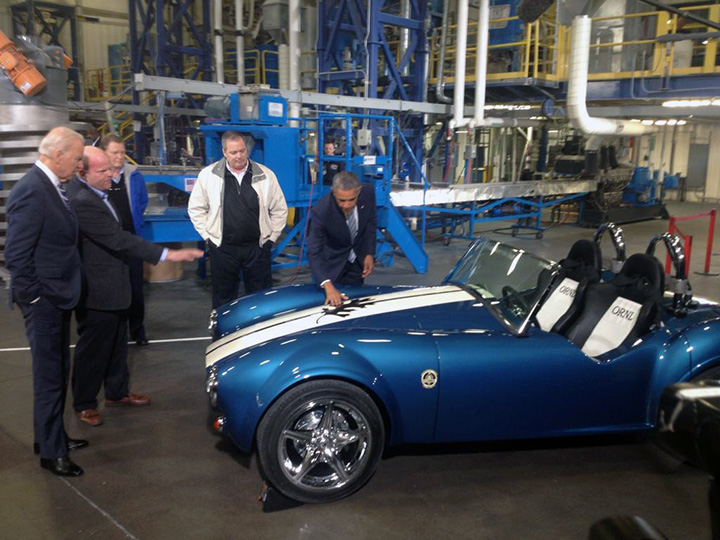
Amidst all the recent media coverage of wearable computing or connected devices for the smart home there is a larger, and perhaps more significant, development taking place that could dominate headlines in the hardware space for 2015. The coming year could show major advances in the world of 3D printing.
On Tuesday, at the North American International Auto Show in Detroit, the big news wasn't the latest electric hybrids or revolutionary new engines. It was the Shelby Cobra, a car first introduced in 1962, which was on display because it arrived as a 3D-printed, working replica.
The car also gained attention late last week when President Barack Obama visited a manufacturing plant in Tennessee where the car was printed. "Six weeks to go from, 'Hey, let's print a car,' to actually having a working vehicle is unheard of. Six weeks is insane," said Lonnie Love in a news release from the U.S. Department of Energy's Oak Ridge National Laboratory (ORNL) where the 3D printing took place.

ORNL's printed car represents an important move forward in another critical area for 3D printing technology: speed. The six weeks it took researchers to print a car was made possible using new technology developed in cooperation with Lockheed Martin and Cincinnati Incorporated that employs both a larger printing nozzle and different pellets as materials.
The 3D printing industry is not new. One of the companies showcasing their technology at CES (The International Consumer Electronics Show) in Las Vegas last week was 3D Systems which was founded in 1986. According to Keith Ozar, the director of consumer products for 3D Systems, the laws of physics have held the industry back from faster printing speeds, but that's about to change.
"Speeds keep getting better on extrusion-based machines," said Ozar.
To work successfully, 3D printers have to be able to melt raw materials and then form them into the part or product desired. This process is called extrusion, which takes cold material and feeds it towards a hot end where it can be shaped and formed.
Over the past year, the 3D printing industry showed signs of getting much better at speeding up this process. Ozar's company was working with Google to print new smartphone modules (a project postponed in December), using a process that would demand a quantum leap in speed for mass delivery. This has led to reports as recently as last month that 3D Systems is working on a printer that will be 50 times faster than today's top-selling jetting 3D printers.
And Hewlett-Packard, long considered the "gold standard" in the computer-based printing world, recently unveiled their 3D multi-fusion jet technology with printing speeds ten times faster than current machines.
But both companies may have already been beaten to the punch by a 15-year-old boy. On Monday, CarrrotCorp officially announced the ORB 3D Printer which was developed by a teenager named Thomas Suarez and claims to be 10 times faster than anything on the market today.
The ORB takes a radically different approach to 3D printing, using a rapidly rotating disc and an extrusion process that stacks large quantities of molten material on top of each other much more quickly. Despite his young age, Suarez has been developing apps for many years and gave a TED talk on his research in 2011.
Recent advances in the 3D printing industry have led to the production of everything from cars to jewelry to food. Just last month, a startup called Made In Space successfully sent and printed a socket wrench at the orbiting International Space Station. If promising recent developments in 3D printing technology bear fruit, the coming year could truly be out of this world.














